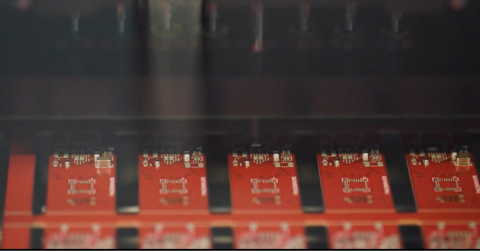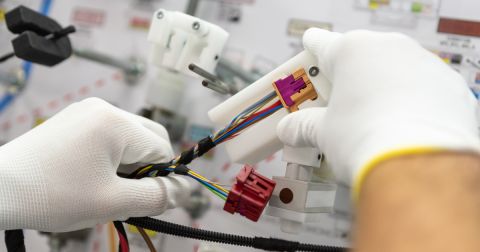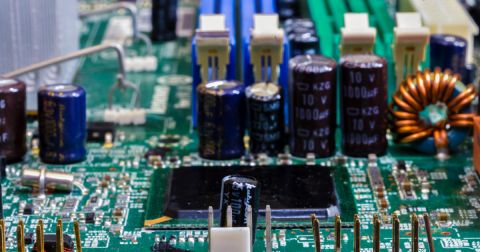How to Overcome Power Distribution and Connector Misalignment Challenges in Multi-Board PCB Systems

Interconnected multi-board PCB systems are now a staple in modern electronic design. From medical devices and telecommunications equipment to consumer electronics and industrial systems, engineers rely on distributing functionality across multiple printed circuit boards to meet increasing demands for modularity, density, and reliability. However, designing and integrating multi-board PCB systems introduces critical challenges, most notably in the areas of power distribution and connector alignment.
In this article, we explore how to overcome these issues using the advanced capabilities of Altium, enabling engineers to create robust, manufacturable multi-board systems from concept to final product.
The Complexity of Interconnected Multi-Board PCB Designs
The push for higher functionality in smaller form factors has led to a rise in systems composed of multiple PCBs. These designs might involve stacked boards in a tight enclosure, flexible interconnects across folding boards, or modular plug-in cards that share a common backplane. Each configuration brings unique requirements, but they all share a common complexity: managing electrical connectivity and mechanical integration across physical separations.
While splitting functionality across boards can reduce design complexity at the subsystem level, it increases the challenge of coordinating signal routing, power distribution, connector placement, and mechanical alignment. When these factors are not planned holistically, problems often surface late in development, leading to functional failures, physical interference, or assembly rework.

Managing Power Distribution in Multi-Board PCB Systems
In Altium, the challenges of managing power distribution across multiple boards can be mitigated by taking advantage of its integrated schematic and layout environment. A unified net naming strategy across all boards ensures that power and ground rails remain consistent. Designers can explicitly label power nets such as +3.3V or GND, applying the same net names across individual board schematics. This consistency helps prevent mismatch errors when the boards are assembled into an interconnected multi-board system.
To further improve power integrity, Altium provides the ability to assign design constraints using parameter sets. These can define the minimum trace widths, current capacities, or preferred layer assignments for power nets. As the PCB layout progresses, Altium’s design rule checks automatically verify compliance with these constraints, helping prevent under-sized conductors or overloaded vias.
Simulation is another powerful tool in addressing power distribution concerns. Altium integrates with the Power Analyzer by Keysight, which provides valuable insights into power delivery challenges. Managing power distribution in multi-board PCB systems involves navigating issues like voltage drops, current imbalances, and return path inconsistencies. Voltage must pass through connectors, planes, or cables, all of which introduce resistance and inductance. If these factors aren’t accounted for, components may experience insufficient or unstable voltage, leading to degraded performance or outright failure.
With the Power Analyzer, engineers can simulate voltage drop and current flow across the entire power delivery network. This allows them to verify whether a 5V rail feeding a daughterboard through a 10-pin connector maintains proper voltage levels under load. If the simulation reveals deficiencies, the designer can adjust the layout, increase copper width, or add redundant paths to ensure stable power delivery before fabrication.
Beyond individual board simulations, it is essential to approach power planning at the system level. Each board in a multi-board setup draws its own load, and power supplies shared across the system must be sized accordingly. Using the Power Analyzer, designers can estimate per-board power consumption and validate that regulators and connectors can safely support the total current demands, helping to avoid regulator droop or overheating in the final interconnected multi-board system.
Ensuring Connector Alignment and Mechanical Integrity
While electrical issues can cause a system to fail silently, mechanical misalignments often result in physical damage or assembly failure. Multi-board PCB systems rely heavily on board-to-board connectors, such as mezzanine headers, edge card slots, or wire harnesses, to bridge both power and data. Ensuring these connectors align perfectly between boards is critical.
Altium addresses this with its multi-board assembly environment, which allows designers to load and position multiple PCBs into a single 3D model. Within this space, each board retains its electrical design but is treated as a physical object for the purpose of alignment and mechanical analysis. Engineers can position boards in relation to one another, rotating, translating, and mating them just as they would be assembled in the real world.
The multi-board environment is particularly helpful for connector alignment. Designers can ensure that pins and sockets line up, that board stacking heights match connector specifications, and that there’s no interference from components or enclosures. Rather than checking dimensions manually or relying on mechanical CAD tools post-design, these validations can be done directly in Altium during the layout phase.
Altium’s 3D clearance checking enhances this capability by highlighting physical overlaps or insufficient spacing. For example, a connector might appear correct in 2D, but in 3D, it may interfere with a neighboring heatsink or fail to clear a standoff. By catching these issues early, engineers avoid costly re-spins and assembly delays.

Altium also bridges the gap between electrical and mechanical domains through its ECAD-MCAD co-design features. Through integrations with tools like SolidWorks and Fusion 360, mechanical engineers can receive up-to-date board outlines, connector placements, and mounting hole positions. Likewise, electrical designers can incorporate mechanical constraints into their layouts, ensuring that board shapes, standoffs, and enclosure requirements are satisfied before finalizing the design.

A Unified Approach to Multi-Board Design
Success in multi-board PCB development hinges on treating electrical and mechanical considerations as interdependent from the outset. With Altium’s unified environment, engineers no longer need to jump between disparate tools to handle power planning, connector placement, or 3D integration.
Instead, they can simulate power rails, visualize full assemblies in 3D, validate interconnects, and collaborate across disciplines, all within the same platform. This not only shortens the design cycle but also improves product quality and reliability. Design intent is preserved from schematic to layout to mechanical packaging, and last-minute surprises become the exception rather than the rule.
Conclusion
Power distribution and connector alignment are two of the most significant challenges in designing multi-board PCB systems. If neglected, they can lead to unreliable performance, high failure rates, and increased manufacturing costs. Fortunately, Altium offers a powerful set of tools tailored to address these very issues, enabling engineers to create complex interconnected multi-board systems with confidence.
By using schematic consistency, simulation tools like Power Analyzer, and the immersive 3D multi-board Assembly workspace, designers can foresee and solve problems before a single board is fabricated. And by collaborating with mechanical teams through Altium’s MCAD integration, they ensure that boards not only work electrically but also fit seamlessly into their final enclosures.
In a world where systems are growing ever more interconnected and compact, mastering multi-board design with tools like Altium isn’t just an advantage. It’s essential.
Interested in exploring multi-board PCB design? Discover how Altium Develop makes it easy to create complex designs and error-free system interconnections.










